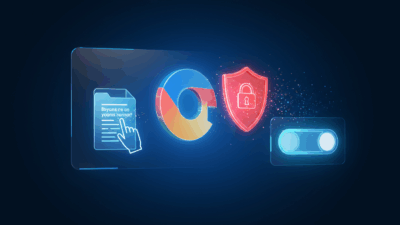Learn how to automatically delete browsing history on Brave, Chrome, Edge, and Safari. Maximize security, prevent tracking, and browse safely with these expert tips.
Automatically delete browsing history when exiting your browser is one of the most effective ways to protect your privacy in the digital world. Every time you close your browser, all traces of visited websites, tracking cookies, and session data completely disappear. Let’s explore how to set up this powerful feature on popular browsers to regain control over your personal data!
Why Enable Auto-Delete Browsing History?
Before diving into the guide, let’s understand the undeniable benefits of this digital habit:
Ultimate Privacy: This is the most obvious benefit. No one can snoop on your online activities. This is especially useful on shared devices.
Effective Anti-Tracking: By deleting cookies and website data each session, you significantly hinder advertisers and third parties from tracking and building profiles about you.
Enhanced Security: Automatically logging out of websites like email, social media, banking after each use minimizes the risk of unauthorized access if you forget to log out manually.
Clean Web Experience: Start each browsing session like a blank slate, unaffected by previous searches or old data.

How to Automatically Delete Browsing History
For Brave and Microsoft Edge
Good news for Brave and Microsoft Edge users! Both browsers have built-in features to automatically delete browsing history when exiting.
Steps for Brave:
- Open Brave browser, click the three horizontal lines (menu) in the top right corner and select Settings.
- In the left menu, choose History > Click Delete browsing data.
- A new window will appear, switch to the “On exit” tab.
- Here, simply check the boxes for data you want to delete, such as Browsing history, Cookies and other site data.
- Click Save and everything is ready. From now on, Brave will automatically clean up each time you close the browser.

Steps for Microsoft Edge:
- Open Edge, click the three dots icon in the top right corner and select Settings.
- Navigate to “Privacy, search, and services” in the left sidebar.
- Scroll down to the “Delete browsing data” section and click “Choose what to clear every time you close the browser.”
- Toggle ON the switches for items you want to delete automatically, such as browsing history, cookies and site data, cached files and images.

For Google Chrome
Surprisingly, Google Chrome, despite having the option to “Delete site data stored on your device when you close all windows,” doesn’t actually delete browsing history through this feature in practice.
Don’t worry, the perfect solution for Chrome users lies in browser extensions. One highly-rated extension is Close & Clean.
- Go to the Chrome Web Store and search for “Close & Clean,” then add it to your browser.

- Click the puzzle piece icon on the toolbar, find Close & Clean, click the three dots and select Options.
- In the settings page, check the items you want to clean automatically, like Clear browsing history and Delete cookies. You can also choose the time range to delete (e.g., from the beginning of time).
- Close this settings tab. From now on, each time you exit Chrome, the extension will silently perform the cleanup for you.

For Safari
Safari on macOS doesn’t provide a direct button to automatically delete browsing history when exiting. However, Apple ecosystem users have alternative options:
Using Private Browsing Mode
This is the simplest method. When you browse in a private window (shortcut Shift + Command + N), Safari won’t save history, cookies, or any data after you close that window. You can even set Safari to always start in this mode in Safari > Settings > General. In the “Safari opens with” section, choose “A new private window.”

Setting Up Periodic History Deletion
Safari allows you to automatically delete browsing history after a certain period. Go to Safari > Settings > General, find “Remove history items” and select “After one day.” While not immediate deletion, this keeps your history tidy.
Utilizing Guest Mode
If you frequently lend your computer to others, activate the Guest account. All activities, downloads, and browsing history in the Guest session will be completely erased when they log out.

Conclusion
By applying these methods to automatically delete browsing history when exiting, you’ve built a solid protective barrier against prying eyes and annoying trackers. Make this habit part of your browsing journey to always feel safe and confident online!
Ready to enhance your digital privacy further? Visit gif.how for more cutting-edge technology tips and discover advanced privacy techniques that will transform your online experience!e your online experience safer and more efficient.



